#microsoft power automate examples
Explore tagged Tumblr posts
Text
#uses for sharepoint#sharepoint consulting services#sharepoint intranet#power automate consulting#power automate services#power automate use case#microsoft power automate examples#benefits of power automate#power automate tasks#use power automate#sharepoint onboarding app#sharepoint design#sharepoint support#sharepoint online lookbook#sharepoint lookbook#lookbook sharepoint
0 notes
Text
I saw a post the other day calling criticism of generative AI a moral panic, and while I do think many proprietary AI technologies are being used in deeply unethical ways, I think there is a substantial body of reporting and research on the real-world impacts of the AI boom that would trouble the comparison to a moral panic: while there *are* older cultural fears tied to negative reactions to the perceived newness of AI, many of those warnings are Luddite with a capital L - that is, they're part of a tradition of materialist critique focused on the way the technology is being deployed in the political economy. So (1) starting with the acknowledgement that a variety of machine-learning technologies were being used by researchers before the current "AI" hype cycle, and that there's evidence for the benefit of targeted use of AI techs in settings where they can be used by trained readers - say, spotting patterns in radiology scans - and (2) setting aside the fact that current proprietary LLMs in particular are largely bullshit machines, in that they confidently generate errors, incorrect citations, and falsehoods in ways humans may be less likely to detect than conventional disinformation, and (3) setting aside as well the potential impact of frequent offloading on human cognition and of widespread AI slop on our understanding of human creativity...
What are some of the material effects of the "AI" boom?
Guzzling water and electricity
The data centers needed to support AI technologies require large quantities of water to cool the processors. A to-be-released paper from the University of California Riverside and the University of Texas Arlington finds, for example, that "ChatGPT needs to 'drink' [the equivalent of] a 500 ml bottle of water for a simple conversation of roughly 20-50 questions and answers." Many of these data centers pull water from already water-stressed areas, and the processing needs of big tech companies are expanding rapidly. Microsoft alone increased its water consumption from 4,196,461 cubic meters in 2020 to 7,843,744 cubic meters in 2023. AI applications are also 100 to 1,000 times more computationally intensive than regular search functions, and as a result the electricity needs of data centers are overwhelming local power grids, and many tech giants are abandoning or delaying their plans to become carbon neutral. Google’s greenhouse gas emissions alone have increased at least 48% since 2019. And a recent analysis from The Guardian suggests the actual AI-related increase in resource use by big tech companies may be up to 662%, or 7.62 times, higher than they've officially reported.
Exploiting labor to create its datasets
Like so many other forms of "automation," generative AI technologies actually require loads of human labor to do things like tag millions of images to train computer vision for ImageNet and to filter the texts used to train LLMs to make them less racist, sexist, and homophobic. This work is deeply casualized, underpaid, and often psychologically harmful. It profits from and re-entrenches a stratified global labor market: many of the data workers used to maintain training sets are from the Global South, and one of the platforms used to buy their work is literally called the Mechanical Turk, owned by Amazon.
From an open letter written by content moderators and AI workers in Kenya to Biden: "US Big Tech companies are systemically abusing and exploiting African workers. In Kenya, these US companies are undermining the local labor laws, the country’s justice system and violating international labor standards. Our working conditions amount to modern day slavery."
Deskilling labor and demoralizing workers
The companies, hospitals, production studios, and academic institutions that have signed contracts with providers of proprietary AI have used those technologies to erode labor protections and worsen working conditions for their employees. Even when AI is not used directly to replace human workers, it is deployed as a tool for disciplining labor by deskilling the work humans perform: in other words, employers use AI tech to reduce the value of human labor (labor like grading student papers, providing customer service, consulting with patients, etc.) in order to enable the automation of previously skilled tasks. Deskilling makes it easier for companies and institutions to casualize and gigify what were previously more secure positions. It reduces pay and bargaining power for workers, forcing them into new gigs as adjuncts for its own technologies.
I can't say anything better than Tressie McMillan Cottom, so let me quote her recent piece at length: "A.I. may be a mid technology with limited use cases to justify its financial and environmental costs. But it is a stellar tool for demoralizing workers who can, in the blink of a digital eye, be categorized as waste. Whatever A.I. has the potential to become, in this political environment it is most powerful when it is aimed at demoralizing workers. This sort of mid tech would, in a perfect world, go the way of classroom TVs and MOOCs. It would find its niche, mildly reshape the way white-collar workers work and Americans would mostly forget about its promise to transform our lives. But we now live in a world where political might makes right. DOGE’s monthslong infomercial for A.I. reveals the difference that power can make to a mid technology. It does not have to be transformative to change how we live and work. In the wrong hands, mid tech is an antilabor hammer."
Enclosing knowledge production and destroying open access
OpenAI started as a non-profit, but it has now become one of the most aggressive for-profit companies in Silicon Valley. Alongside the new proprietary AIs developed by Google, Microsoft, Amazon, Meta, X, etc., OpenAI is extracting personal data and scraping copyrighted works to amass the data it needs to train their bots - even offering one-time payouts to authors to buy the rights to frack their work for AI grist - and then (or so they tell investors) they plan to sell the products back at a profit. As many critics have pointed out, proprietary AI thus works on a model of political economy similar to the 15th-19th-century capitalist project of enclosing what was formerly "the commons," or public land, to turn it into private property for the bourgeois class, who then owned the means of agricultural and industrial production. "Open"AI is built on and requires access to collective knowledge and public archives to run, but its promise to investors (the one they use to attract capital) is that it will enclose the profits generated from that knowledge for private gain.
AI companies hungry for good data to train their Large Language Models (LLMs) have also unleashed a new wave of bots that are stretching the digital infrastructure of open-access sites like Wikipedia, Project Gutenberg, and Internet Archive past capacity. As Eric Hellman writes in a recent blog post, these bots "use as many connections as you have room for. If you add capacity, they just ramp up their requests." In the process of scraping the intellectual commons, they're also trampling and trashing its benefits for truly public use.
Enriching tech oligarchs and fueling military imperialism
The names of many of the people and groups who get richer by generating speculative buzz for generative AI - Elon Musk, Mark Zuckerberg, Sam Altman, Larry Ellison - are familiar to the public because those people are currently using their wealth to purchase political influence and to win access to public resources. And it's looking increasingly likely that this political interference is motivated by the probability that the AI hype is a bubble - that the tech can never be made profitable or useful - and that tech oligarchs are hoping to keep it afloat as a speculation scheme through an infusion of public money - a.k.a. an AIG-style bailout.
In the meantime, these companies have found a growing interest from military buyers for their tech, as AI becomes a new front for "national security" imperialist growth wars. From an email written by Microsoft employee Ibtihal Aboussad, who interrupted Microsoft AI CEO Mustafa Suleyman at a live event to call him a war profiteer: "When I moved to AI Platform, I was excited to contribute to cutting-edge AI technology and its applications for the good of humanity: accessibility products, translation services, and tools to 'empower every human and organization to achieve more.' I was not informed that Microsoft would sell my work to the Israeli military and government, with the purpose of spying on and murdering journalists, doctors, aid workers, and entire civilian families. If I knew my work on transcription scenarios would help spy on and transcribe phone calls to better target Palestinians, I would not have joined this organization and contributed to genocide. I did not sign up to write code that violates human rights."
So there's a brief, non-exhaustive digest of some vectors for a critique of proprietary AI's role in the political economy. tl;dr: the first questions of material analysis are "who labors?" and "who profits/to whom does the value of that labor accrue?"
For further (and longer) reading, check out Justin Joque's Revolutionary Mathematics: Artificial Intelligence, Statistics and the Logic of Capitalism and Karen Hao's forthcoming Empire of AI.
25 notes
·
View notes
Text
Copilot Use Cases For Developers
Microsoft Copilot is revolutionizing the way developers interact with development tools, providing AI-powered assistance across a range of Microsoft products like Visual Studio, Azure, and GitHub. With Copilot integrated into these environments, developers can streamline workflows, automate routine tasks, and leverage advanced features for improved productivity. For example, in Visual Studio, Copilot helps write code faster by suggesting context-aware completions, refactoring code, and even generating entire functions based on brief descriptions. This drastically reduces the time spent on boilerplate code and increases efficiency, allowing developers to focus on more creative and complex aspects of their projects.
Furthermore, Microsoft Copilot empowers developers to work smarter by integrating with cloud-based services like Azure. By leveraging machine learning and AI, it can suggest optimized solutions, recommend cloud resources, and assist in troubleshooting infrastructure issues. This level of automation and intelligent support enables developers to make better decisions quickly, while reducing the cognitive load and manual effort needed to manage cloud-based applications. As Microsoft Copilot continues to evolve, it will increasingly become an indispensable tool in the developer toolkit, transforming how software is built and deployed in today’s fast-paced technological landscape.
Click Here to know more: https://www.intelegain.com/top-10-copilot-use-cases-in-2025/
#MicrosoftCopilot#AIForDevelopers#DevTools#ProductivityBoost#CodeCompletion#CloudDevelopment#VisualStudio#Azure#MachineLearning#AutomatedCoding#SoftwareDevelopment#TechInnovation#DeveloperEfficiency#AIinTech#DevOps
2 notes
·
View notes
Text
What is DeepSeek OpenAI? A Simple Guide to Understanding This Powerful Tool

Technology is constantly evolving, and one of the most exciting advancements is artificial intelligence (AI). You’ve probably heard of AI tools like ChatGPT, Google’s Bard, or Microsoft’s Copilot. But have you heard of DeepSeek OpenAI? If not, don’t worry! In this blog, we’ll break down what DeepSeek OpenAI is, how it works, and why it’s such a big deal in the world of digital marketing and beyond. Let’s dive in!
What is DeepSeek OpenAI?
The advanced AI platform DeepSeek OpenAI provides businesses and marketers together with individual’s tools to automate operations while enabling better decision-making and improved content generation efficiency. The platform functions as a highly intelligent assistant which analyzes data while generating ideas and creating content and forecasting trends within seconds.
The system's name "DeepSeek" was inspired by its deep information exploration capabilities to generate significant insights. DeepSeek operates through OpenAI's robust technology platform that also powers tools such as ChatGPT. DeepSeek delivers optimized performance for particular circumstances within digital marketing analytics and customer relationship management applications.

Why is DeepSeek OpenAI Important for Digital Marketing?
Digital marketing is all about connecting with your audience in the right way, at the right time. But with so much competition online, it can be challenging to stand out. That’s where DeepSeek OpenAI comes in. Here are some ways it can transform your marketing efforts:
1. Content Creation Made Easy
Your audience engagement depends heavily on producing high-quality content although this process demands significant time investment. Through DeepSeek OpenAI users can instantly create blog posts together with social media captions and email newsletters and ad copy. You gain professional writing support from a team member at no additional expense.
2. Data Analysis and Insights
Marketing is all about data. DeepSeek analyzes website traffic combined with social media performance and customer behavior to generate valuable insights. With its analytics capabilities the system shows you which items customers prefer the most and which promotional strategies generate the highest customer purchases.
3. Personalization at Scale
The demand for personalized customer experiences exists though implementing such solutions manually proves difficult. DeepSeek enables you to produce customized email marketing initiatives together with tailored product recommendation systems and conversational bots that deliver unique messages to every user.
4. Predictive Analytics
DeepSeek's predictive analytics system enables companies to anticipate their business future through forecasting customer behavior and sales performance and industry trends. DeepSeek uses predictive analytics to forecast trends alongside customer behavior and sales performance. The predictive capabilities of DeepSeek enable your business to anticipate market trends thus enabling proactive decision-making.
5. Automation of Repetitive Tasks
DeepSeek helps automate time-consuming repetitive tasks that include social media scheduling and customer inquiry response. DeepSeek automation allows you to allocate your time toward strategic planning and creative thinking.
Real-Life Examples of DeepSeek OpenAI in Action
Let’s look at some real-world scenarios where DeepSeek OpenAI can make a difference:
E-commerce Store: DeepSeek enables online stores to examine customer reviews which reveals frequent customer grievances. Their analysis helps them enhance their products while developing specific marketing initiatives.
Social Media Manager: Social media managers use DeepSeek to create compelling captions and hashtags for their social media posts while the platform helps them determine successful content types. The tool helps users understand which types of content deliver the best results so they can modify their approach.
Small Business Owner: The website blog posts written through DeepSeek help the small business owner save significant amounts of time. Through this platform they generate customized email marketing initiatives which enhance customer retention.
Marketing Agency: DeepSeek enables marketing agencies to generate thorough reports by analyzing data from numerous clients through its system. The agency uses the data analysis to produce superior outcomes which enable them to excel in their competitive field.
Challenges and Limitations
While DeepSeek OpenAI is incredibly powerful, it’s not perfect. Here are a few challenges to keep in mind:
Dependence on Data: The quality of DeepSeek’s output depends on the quality of the data you provide. Garbage in, garbage out!
Lack of Human Touch: DeepSeek's content creation capability exists alongside its inability to replicate human emotional touchpoints in writing.
Learning Curve: Using any new tool requires users to overcome an initial learning process. Learning to utilize DeepSeek efficiently requires a period of complete understanding.
Cost: DeepSeek advanced AI tools present high costs for users with specific requirements.

How to Get Started with DeepSeek OpenAI
Ready to give DeepSeek OpenAI a try? Here’s how to get started:
Sign Up: Create an account at the DeepSeek website to begin. Platforms typically allow new users to experience free trial or demonstration features as a basis for learning their tools.
Define Your Goals: What objectives do you want to accomplish through DeepSeek? Clear objectives about content creation data analysis and customer engagement will help you maximize your use of the tool.
Explore Features: Spend a few moments to investigate all features and capabilities of DeepSeek. Perform multiple tasks to determine which ones provide your optimal results.
Integrate with Your Workflow: DeepSeek enables integration with multiple tools including CRM systems and email marketing platforms and social media scheduling tools.
Monitor and Adjust: When using DeepSeek monitor the results to enable necessary adjustments. The more time you spend using its capabilities the better you will become at accessing its full potential.
The Future of DeepSeek OpenAI
DeepSeek OpenAI holds an exciting path into the future. AI technology's future development will bring us progressively enhanced capabilities and features. Future versions of DeepSeek OpenAI could develop capabilities to generate video content while designing graphics and autonomously managing complete marketing campaigns.
Final Thoughts
DeepSeek OpenAI functions as more than a tool because it represents a transformative solution for digital marketing alongside other fields. The system allows businesses to achieve better results through automated processes while creating valuable insights and expanded creative possibilities. DeepSeek serves marketers at every experience level to help them reach their objectives at accelerated speeds while boosting operational efficiency. Visit Eloiacs to find more about AI Solutions.
3 notes
·
View notes
Text
In today’s fast-paced business environment, enhancing productivity is more crucial than ever to successfully accomplish this, one can rely on the power of automation. By automating routine tasks, businesses can save time, reduce errors, and focus on more strategic activities. In this blog post, we will explore essential automation strategies that can help boost productivity in your organization.
Boost productivity with these essential automation strategies. Automation is transforming the way businesses operate, making processes more efficient and streamlined. Implementing the right automation strategies can lead to significant improvements in productivity and overall business performance. In this article, we will discuss several key automation strategies that can help you achieve these goals.
1. Automate Repetitive Tasks
One of the most effective ways to boost productivity is by automating repetitive tasks. These tasks often consume a significant amount of time and can be easily automated using the right tools. For example, you can automate data entry, email responses, and appointment scheduling. By doing so, you free up valuable time for more critical activities.
2. Utilize Workflow Automation
Workflow automation involves creating a series of automated actions that complete a process. This strategy is particularly useful for complex processes that involve multiple steps and departments. Tools like Zapier and Microsoft Power Automate can help you set up automated workflows, ensuring that tasks are completed efficiently and accurately.
3. Implement Marketing Automation
Marketing automation can significantly enhance your marketing efforts by automating tasks such as email marketing, social media posting, and lead nurturing. Platforms like HubSpot and Mail chimp offer comprehensive automation features that can help you reach your target audience more effectively and improve your marketing ROI.
4. Enhance Customer Service with Chatbots
Integrating chatbots into your customer service strategy can greatly improve efficiency and customer satisfaction. Chabot’s can handle a wide range of customer queries, provide instant responses, and escalate issues to human agents when necessary. This not only saves time but also ensures that customers receive timely and accurate support.
5. Streamline Financial Processes
Automation can also be applied to financial processes such as invoicing, expense tracking, and payroll management. Tools like QuickBooks and Xero offer robust automation features that can help you manage your finances more efficiently and reduce the risk of errors.
Boost Productivity with These Essential Automation Strategies. Automation is a powerful tool that can help businesses enhance productivity and efficiency. By implementing the strategies discussed in this article, you can streamline your processes, reduce manual workload, and focus on more strategic activities. Have you tried any of these automation strategies?
#Automation#Productivity#BusinessEfficiency#TechTrends#WorkflowAutomation#DigitalTransformation#AutomationTools#SmartBusiness#Innovation#Accomation#BusinessAutomation#InvoiceManagement#EfficiencyTools#AutomationSolutions#SmallBusinessTools#StreamlineOperations#BusinessGrowth#FinancialAutomation
2 notes
·
View notes
Text
The Crucial ERP System Examples: Transforming Business Operations

In today’s fiercely competitive business realm, the quest for operational efficiency and streamlined management is paramount. Enterprise Resource Planning (ERP) systems stand tall as technological marvels, revolutionizing the way businesses operate. These robust software solutions amalgamate various functions within a unified framework, enabling seamless coordination across departments and facilitating data-driven decision-making.
This exploration ventures into the realm of ERP systems, shedding light on a spectrum of exemplary solutions that have reshaped modern business operations. From stalwarts like SAP ERP and Oracle ERP Cloud to innovative players like Microsoft Dynamics 365 and Odoo, each system represents a unique amalgamation of features, functionalities, and industry applications.
This comprehensive journey traverses the functionalities, industry adaptability, and transformative potentials of these ERP systems. Understanding their intricacies is pivotal for businesses seeking to optimize processes, unlock efficiencies, and navigate the complexities of today’s business landscape. Join this insightful exploration to unravel the significance and impact of these ERP system examples in shaping the future of business operations.
ERP System Examples
1. SAP ERP: Revolutionizing Business Management
SAP ERP has solidified its position as a leader by providing an all-encompassing suite covering critical business functions. Beyond its core modules in finance, HR, and supply chain, SAP offers specialized applications for industry-specific needs. For instance, SAP S/4HANA, an intelligent ERP, integrates AI and analytics for real-time insights, empowering businesses to adapt swiftly to market changes.
The scalability of SAP ERP is noteworthy, catering to startups aiming for growth and global corporations managing complex operations. It provides modular solutions, enabling businesses to adopt specific functionalities based on their immediate needs.
2. Oracle ERP Cloud: Innovating Operations in the Cloud
Oracle ERP Cloud’s robust suite extends far beyond traditional ERP capabilities. It embraces emerging technologies like AI, machine learning, and blockchain to drive innovation. Its predictive analytics empower businesses to anticipate market trends, optimize supply chains, and mitigate risks effectively.
The cloud-based structure of Oracle ERP Cloud ensures not just accessibility but also scalability without compromising security. It enables seamless integration with other Oracle Cloud applications, fostering a unified ecosystem for comprehensive business management.
3. Microsoft Dynamics 365: Integrating CRM and ERP Capabilities
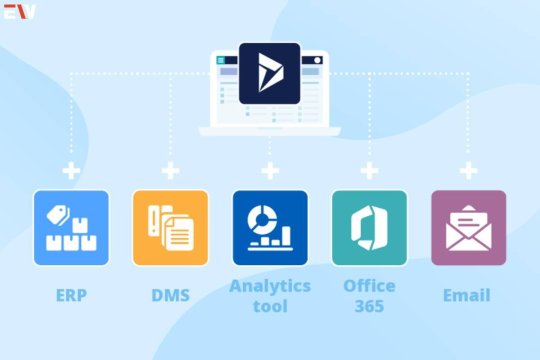
Microsoft Dynamics 365 is a fusion of CRM and ERP functionalities, providing a holistic platform for businesses. Unlike its core ERP modules, Dynamics 365 offers advanced tools for customer engagement, field service, and marketing automation. Its flexibility lies in its modularity, allowing businesses to tailor their systems by choosing specific applications that align with their objectives.
Moreover, its integration with Microsoft Office 365 and Power Platform strengthens collaboration and data analysis, facilitating informed decision-making across departments.
4. NetSuite: Empowering Diverse Industries
NetSuite’s cloud-based ERP system addresses the complex needs of various industries. Its suite encompasses solutions for financial management, e-commerce, and inventory control. Beyond the core ERP functionalities, NetSuite offers industry-specific modules, such as SuiteCommerce for retail businesses and SuiteSuccess for services, enhancing its appeal across diverse sectors.
The scalability and adaptability of NetSuite make it a preferred choice for businesses experiencing rapid growth or seeking to expand into new markets.
5. Infor ERP: Tailored Solutions for Specific Sectors
Infor’s industry-specific ERP solutions cater to the nuanced requirements of sectors like healthcare, manufacturing, and distribution. In addition to its standard ERP functionalities, Infor focuses on specialized applications such as Infor CloudSuite Healthcare for healthcare organizations and Infor LN for manufacturing, ensuring tailored solutions for sector-specific challenges.
Infor’s commitment to innovation and addressing sector-specific complexities underscores its relevance in the ERP landscape.
6. Epicor ERP: Amplifying Industry Operations
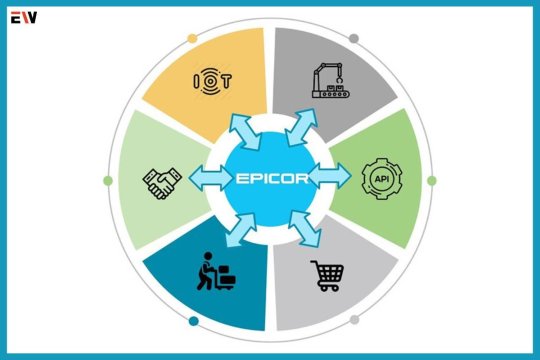
Epicor ERP excels in catering to industries such as manufacturing, distribution, retail, and services. Its core ERP functionalities are complemented by advanced analytics and business intelligence tools. Epicor’s Smart Inventory Planning and Optimization (IPO) tool, for instance, utilizes AI to enhance inventory management, improving efficiency and reducing costs.
Moreover, its agile architecture enables easy customization and integration with third-party applications, providing businesses with a highly adaptable solution.
7. Odoo: Flexibility and Customization
Odoo’s open-source ERP system offers an extensive suite of applications covering CRM, inventory management, project management, and more. What sets Odoo apart is its modular nature, allowing businesses to select and integrate specific applications as per their requirements. Odoo’s flexibility and affordability are especially beneficial for small to medium-sized enterprises seeking customizable solutions without exorbitant costs.
The Value of ERP Systems in Modern Business
ERP systems serve as catalysts for efficiency, productivity, and growth:
Streamlined Operations: Automating tasks streamlines processes, reducing manual errors and optimizing resource allocation.
Enhanced Data Management: Centralized databases ensure data consistency and accuracy, fostering informed decision-making.
Agile Decision-Making: Real-time data access empowers businesses to make agile decisions, staying ahead in dynamic markets.
Customer-Centric Approach: Integrated CRM functionalities enable businesses to deliver personalized services, boosting customer satisfaction and loyalty.
Making Informed Choices: Selecting the Right ERP System

The process of choosing an ERP system involves careful evaluation and alignment with a business’s unique needs. Understanding the scalability, integration capabilities, and industry-specific functionalities of each system is crucial for successful adoption.
Conclusion: Embracing ERP Systems for Sustainable Growth
The landscape of ERP systems continues to evolve, offering businesses versatile solutions to streamline operations, enhance efficiency, and foster sustainable growth. From SAP’s scalability to Oracle’s cloud-driven innovation and Odoo’s customization prowess, each system exemplifies the diverse capabilities shaping modern business management.
Selecting the right ERP system aligned with specific needs remains pivotal for organizations seeking resilience and competitiveness. As businesses strive for optimization and adaptability, embracing these transformative technologies ensures a strategic advantage in an ever-evolving market. It stands as a pillar of efficiency, empowering businesses to navigate complexities and drive success through informed decisions and streamlined operations.
Also Read: A Deep Dive into Corporate Wellness Programs for a Healthier, Happier Workplace
#ERPRevolution#BusinessTransformation#TechInnovation#DigitalTransformation#EnterpriseSolutions#InnovationInBusiness#TechLeadership
2 notes
·
View notes
Link
2 notes
·
View notes
Text
#power automate consulting#power automate platform#use power automate#power automate use case#power automate online#microsoft power automate examples#benefits of power automate#power automate examples#microsoft power automation#power automate 365#powerautomate flow#power automate sharepoint#automate microsoft#power automation microsoft#power automate tasks
0 notes
Text
9 Best AI Chatbots
Smartest AI Chatbots in 2023
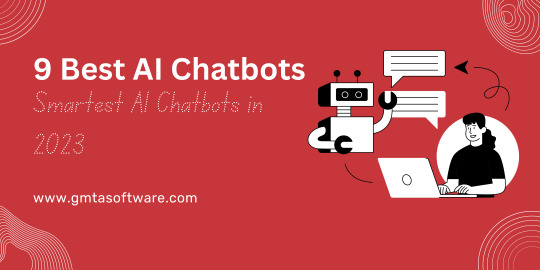
Chatbots have become one of the most important advances in the constantly evolving field of artificial intelligence (AI). These virtual assistants are made to converse with users in natural language and provide customized experiences in a variety of industries. As 2023 approaches, AI chatbots’ capabilities have advanced to new levels, and their use cases are becoming more varied.
The nine most intelligent AI chatbots that are trending in 2023 will be covered in this blog:
1. GPT-4 Chatbot by OpenAI

OpenAI’s GPT-4 stands as a shining example of conversational AI prowess. With improved contextual understanding and human-like responses, GPT-4 has become a cornerstone for numerous applications, ranging from customer support to content creation. Its impressive language generation abilities and nuanced understanding of user queries make it an invaluable tool for businesses and individuals alike.
2. Google’s ChatGPT-X

Google has also made significant strides in the AI chatbot domain with ChatGPT-X. This chatbot leverages Google’s vast resources and the power of GPT-3.5, allowing for more coherent and contextually relevant conversations. ChatGPT-X excels in aiding users with information retrieval, task management, and even providing companionship.
3. Amazon’s EchoBot

EchoBot, developed by Amazon, showcases the potential of AI chatbots in the realm of e-commerce. Integrated with Amazon’s shopping platform, EchoBot assists users in product recommendations, order tracking, and seamless shopping experiences. Its ability to understand user preferences and cater to their needs has elevated the online shopping journey.
4. IBM’s Watson Assistant

IBM’s Watson Assistant continues to impress with its AI-powered solutions for enterprises. In 2023, it has evolved to offer even more sophisticated natural language processing (NLP) capabilities. Watson Assistant empowers businesses to create tailored virtual assistants that streamline customer interactions, improve support systems, and enhance overall operational efficiency.
5. Microsoft’s Azure Bot Services

Microsoft’s Azure Bot Services has solidified its position as a top choice for businesses seeking AI-driven chatbot solutions. With enhanced language understanding and integration with Microsoft’s ecosystem, Azure Bot Services excels in diverse applications, including internal process automation, customer service, and software troubleshooting.
6. Facebook’s SocialBuddy

Facebook’s SocialBuddy is a testament to the integration of AI chatbots in social media platforms. Designed to facilitate brand-consumer interactions, SocialBuddy assists businesses in managing customer inquiries, feedback, and engagement. Its sentiment analysis capabilities contribute to personalized responses that resonate with users on a deeper level.
7. Siri 2.0 by Apple

Apple’s Siri has been a household name since its inception, and in 2023, Siri 2.0 takes virtual assistance to new heights. With advancements in speech recognition and context-awareness, Siri 2.0 provides users with a more intuitive and seamless experience across their Apple devices. From setting reminders to controlling smart home devices, Siri remains a frontrunner in the AI assistant landscape.
8. Samsung’s Bixby
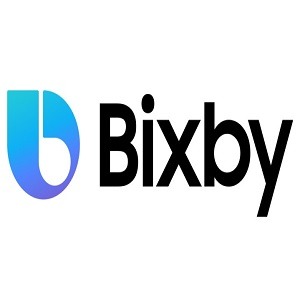
Samsung’s Bixby has matured into a comprehensive AI assistant that caters to users’ daily needs. Its integration with Samsung’s ecosystem empowers users to control devices, manage schedules, and access relevant information effortlessly. Bixby’s multi-modal capabilities, combining voice, text, and touch interactions, offer a well-rounded and user-friendly experience.
9. Salesforce’s ServiceBot
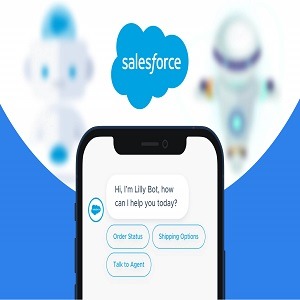
In the realm of customer relationship management (CRM), Salesforce’s ServiceBot shines brightly. Its advanced AI-driven chat capabilities enable businesses to provide exceptional customer support, personalized recommendations, and proactive issue resolution. ServiceBot’s integration with Salesforce’s CRM platform ensures a seamless transition between customer interactions and data management.
The year 2023 has witnessed the chatbot landscape evolving into a realm of boundless possibilities. The nine AI chatbots mentioned above represent a diverse range of applications, from customer support to social interactions, and from e-commerce to enterprise solutions.
These smart AI chatbots are not only changing the way businesses engage with customers but also enhancing individual experiences across various platforms.
As AI continues to advance, we can only expect these chatbots to become even smarter, more intuitive, and more integrated into our daily lives. Whether it’s streamlining business processes or providing personalized recommendations, AI chatbots are undoubtedly here to stay, making our interactions with technology more seamless and human-like than ever before.
1 note
·
View note
Text
Warning: This is a very long, very tech related post, which expands on the post above in a very winding way. If that doesn't interest you, do not proceed.
I am a Gen Z systems administrator (IT guy, techie, etc. for those of you who have not heard the term before). And let's be clear, I didn't end up in this position because I'm some kind of computer genius freak who's been a compsci-doctorate level programmer since I was eight years old (I have been programming since I was ten, but it was pretty much at an age appropriate level). I can:
Use Google.
Withstand enough of Microsoft, and when the occasion calls for it Apple's, bullshit with enough patience to fix most problems.
Make use of available diagnostic methods and tools to isolate problems to specific programs and hardware in computers, which relates back to option one.
Read hard to read technical documents, logs, and discussions to get information that is not immediately clear.
I am very rarely innovating new methods of finding things. I rarely work on issues that no one has encountered or fixed before (although it has happened a few times, it happens to every sysadmin). The skillset I have is, on some level, interchangeable with every mechanic or technician for any machine ever made, including cars, ships, and planes.
And, ultimately, the need for that skillset is what's missing from computers nowadays. It used to be, to use a desktop, even on the most basic rudimentary level, required you to have some technical skill. Without a GUI, you would have to know how to load programs and navigate a filesystem in DOS. You would have to know how to un-park the heads on a disk, and park them when you were done. How to operate a modem.
Doing the basic stuff, up until like, Windows 7 (and the release of the iPhone, the first ever smartphone two years earlier), took some level of technical acumen. Want to mod a game? Have fun downloading janky third party mod packers and managers, and editing files manually inside the game config. Same problem for getting games as a whole. Buy the CD. Put it in your computer. Doesn't work because you have dependencies missing. The dependencies also have missing dependencies, which you then have to find. Packages are missing. So on and so forth. Keeping your stuff running the way you wanted was hard.
Now? Not so much. Windows does a lot in the backend on computer systems. As an example to contrast something I brought up in the previous paragraph is Steam, and other similar stores. One click to install with all dependencies, and one click to install mods. And more importantly, us sysadmins do even more shit on the backend on incredibly powerful commercial systems which are also very heavily integrated and automated. But it's all still there.
These systems, much like many things in our society, are designed to discourage user-level fixes. But you can still do it, even if everything has been designed to cut out that basic level skillset development.
What's really killing us here is that we're giving the very young highly commercialized and consumer oriented devices like iPads to play with, which reinforces this anti-problem solving, "there's always an app for that" style of thinking.
We can and should have those devices, don't get me wrong. There is a place for them where reliability is at a premium, and you just need things to work and be simple for performing low level tasks. I manage multiple construction companies, and a few of them make incredibly effective use of managed tablets and iPads for on-site management personnel, like foremen and project managers, to give a practical example. Easy to set up, easy to swap around, and easy to use with very low failure rates. Great for people who don't need to do super technical work but need to be very effective communicators.
But that's not what we should be teaching people on, because it ruins any chance at proper problem-solving thinking. What we want to train them on is a system that has room for failure, and room for troubleshooting. And that is where the open source and full desktop environments comes to the rescue.
If you want your kid to learn how a computer works, give them a locked down (or not-so-locked down, up to you) Windows PC. Or even better, give them a clean copy of Ubuntu on a laptop with a touchscreen to work with for their childhood. Shit will break, fail, go lopsided, bug out, etc. Part of the cost for using that device will, inevitably, be learning how to fix it, and also as they get older, fixing it themselves.
We can bring these skills back. But it means, like in all things, standing up and resisting the ever encroaching rise of corporations and their locked down technology.
another thought about "gen z and gen alpha don't know how to use computers, just phone apps" is that this is intentionally the direction tech companies have pushed things in, they don't want users to understand anything about the underlying system, they want you to just buy a subscription to a thing and if it doesn't do what you need it to, you just upgrade to the more expensive one. users who look at configuration files are their worst nightmare
#sysadmin#it technology#technician#internet technology#computing#computers#windows#tech industry#text post#opinion piece#opinion
79K notes
·
View notes
Text
Transform Your Customer Relationships with Expert Dynamics CRM Implementation in Noida
Dynamics CRM implementation partner in Noida | dynamics crm implementation services in Noida
In today's digital economy, firms compete based on customer experience rather than price or goods. Businesses want strong, intelligent technologies to provide excellent service, make meaningful relationships, and sustain long-term loyalty. This is where Microsoft Dynamics CRM comes into play.
If you live in or around Noida, working with the proper Dynamics CRM implementation partner may make all the difference. Preeminent SoftCom provides extensive experience, strategic insights, and customized solutions to enable organisations across industries to fully realise the potential of Microsoft Dynamics CRM.

Why Dynamics CRM?
Microsoft Dynamics CRM is a very effective platform for managing relationships with customers across marketing, sales, and support departments. It enables organisations to improve communication, automate procedures, and get meaningful insights from consumer data. To make the most of this powerful platform, you'll need more than simply a software license—professional implementation that corresponds with your company objectives.
And that's precisely what our Dynamics CRM implementation services in Noida provide: personalised deployments that match your processes, people, and goals.
Preeminent SoftCom – Your Trusted CRM Partner in Noida
With years of expertise and a certified Microsoft staff, Preeminent SoftCom has established itself as a top Dynamics CRM implementation partner in Noida. We go beyond technical setup; we collaborate with your teams to identify pain spots, plan customer journeys, and build CRM solutions that increase engagement and growth.
Our comprehensive Dynamics CRM implementation services in Noida cover the following:
Business process analysis
Custom CRM design & architecture
Third-party system integration
Data migration & cleansing
User training & post-go-live support
Whether you’re migrating from legacy systems or implementing CRM for the first time, we ensure the transition is smooth, efficient, and value-driven.
Customized CRM Solutions for Every Business
Every business faces different challenges and objectives. That is why our dynamic CRM installation services in Noida are always tailored to the needs of the client. Whether you work in retail, manufacturing, banking, or healthcare, we create unique modules to meet your specific business needs.
For example:
A real estate firm might need lead scoring, property lifecycle automation, and appointment scheduling tools.
A healthcare provider might require secure patient communication, appointment tracking, and service feedback integration.
A B2B enterprise might benefit from opportunity tracking, account management, and automated quoting systems.
No matter your domain, our role as a dynamics CRM implementation partner in Noida is to ensure the CRM reflects how your business truly operates.
What Sets Us Apart
Choosing the right implementation partner is crucial. Here's what makes Preeminent SoftCom a standout dynamics crm implementation partner in Noida:
Microsoft Certified Experts: Our team brings hands-on experience across CRM, Power Platform, and Azure integration. Agile Implementation: We follow an agile project management approach, ensuring flexibility, quick wins, and faster ROI. End-User Centric: We focus on usability and user adoption, not just configuration. Your team will love using the system we build. Post-Go-Live Support: From troubleshooting to enhancements, our support team is just a call away.
By offering reliable dynamics CRM implementation services in Noida, we’ve helped dozens of businesses turn CRM from a basic tool into a strategic asset.
CRM Beyond Deployment – Driving Long-Term Growth
Many firms make the mistake of seeing CRM adoption as a one-off IT effort. However, true success requires long-term usage, adoption, and refining. As your Dynamics CRM installation partner in Noida, we help you adapt to market expectations.
We provide monthly upgrades, analytics dashboards, and add-ons to ensure your system is future-ready. AI-powered customer analytics, email automation, multichannel engagement, and KPI tracking guarantee that your CRM evolves alongside your business.
Our proactive Dynamics CRM Implementation Services in Noida enable you to:
Boost team productivity
Enhance customer satisfaction
Optimize lead conversions
Accelerate revenue growth
Our Local Advantage
Noida is one of India's most thriving business districts. Companies here seek agility, scalability, and swift execution. As a Dynamics CRM implementation partner in Noida, we understand the local industries, regulations, and consumer behaviour.
We've worked with customers in a variety of industries, including IT services, logistics, education, and fintech, to provide customized Dynamics CRM solutions that increase both internal productivity and external service.
Our Dynamics CRM implementation services in Noida are intended to fit with both regional and worldwide best practices, giving you the best of both worlds.
Let’s Build Smarter Customer Journeys—Together
In a world where consumer expectations are continually changing, having the appropriate CRM is no longer an option—it's required. But much more important is having the appropriate partner to advise you.
Preeminent SoftCom's objective is simple: to assist Noida companies in providing exceptional customer experiences using the cognitive power of Microsoft Dynamics CRM.
Whether you require a new implementation, CRM optimisation, or long-term maintenance, Preeminent SoftCom is the top-rated Dynamics CRM implementation partner in Noida. Contact us
0 notes
Text
Matrixify: The Ultimate Data Management Tool for Shopify
Running an eCommerce store on Shopify often involves managing large amounts of data — from thousands of products and orders to customer records, collections, and more. For growing businesses, handling this data manually can be slow, tedious, and prone to error. That’s where Matrixify comes in — a powerful Shopify app that simplifies bulk data import, export, and automation.
What is Matrixify?
Matrixify (formerly known as Excelify) is a data management app built for Shopify stores. It allows store owners to easily import, export, update, and migrate data using spreadsheet files like Excel (XLSX) or CSV. Instead of editing one item at a time inside the Shopify dashboard, Matrixify enables bulk editing of thousands of records in just a few clicks.
It is ideal for store migrations, inventory updates, product uploads, and data backups.
Key Features of Matrixify
Bulk Data Import and Export Matrixify supports almost every kind of Shopify data — including products, collections, orders, customers, blogs, discounts, redirects, and more. You can export data into an Excel or CSV file, edit it, and import it back with the changes applied.
Excel and CSV File Support Matrixify allows you to work with data in familiar formats. You can use tools like Microsoft Excel or Google Sheets to edit product details, prices, or inventory levels and then re-upload the file.
Data Migration If you're moving from another platform (like WooCommerce, Magento, or BigCommerce) to Shopify, Matrixify makes it easy to migrate your store's content with minimal hassle.
Scheduled Automation Automate repetitive tasks like daily order exports, inventory syncing from a supplier, or price updates. Matrixify can run scheduled imports or exports via URLs or FTP/SFTP locations.
Error Handling and Reports If something goes wrong during an import, Matrixify provides detailed error messages to help you troubleshoot. This saves time and reduces mistakes.
Partial Updates You can choose to update only specific fields in your data — for example, just changing product prices without affecting other product information.
Benefits of Using Matrixify
Saves Time: Edit thousands of records at once rather than one by one.
Increases Accuracy: Reduces manual errors with spreadsheet-based updates.
Improves Workflow: Automate tasks and integrate with external systems.
Enhances Flexibility: Customizable export formats and selective updates.
Supports Growth: Ideal for stores scaling up inventory or expanding operations.
Use Case Examples
A store updating prices for a seasonal sale across 2,000 products.
Migrating an entire product catalog from Magento to Shopify.
Exporting customer data for marketing campaigns.
Automating the daily export of orders to a fulfillment center.
Conclusion
Matrixify is an essential tool for serious Shopify store owners and developers who need more control over store data. Whether you're managing a small business or running a large eCommerce operation, Matrixify simplifies data workflows, reduces errors, and saves valuable time. With its powerful import/export features and automation capabilities, Matrixify is a smart investment for optimizing your Shopify store’s performance.
0 notes
Text
Gen AI Training in Hyderabad | Generative AI Courses Online
How to Leverage Generative AI for Career Growth in Tech

GenAI Training, Artificial intelligence (AI) is revolutionizing the tech industry, with generative AI leading the way. Whether you are a software developer, data scientist, or IT professional, understanding and leveraging generative AI can significantly boost your career. This article explores how generative AI can enhance your skillset, improve productivity, and create new job opportunities in tech. Generative AI Courses Online
1. Upskilling with Generative AI
The rapid advancement of AI demands that tech professionals continually update their skills. Generative AI tools such as OpenAI’s ChatGPT, Google’s Gemini, and GitHub Copilot can help you:
Learn new programming languages by generating code examples and explanations.
Improve problem-solving skills by analyzing AI-generated suggestions.
Automate repetitive coding tasks to focus on complex development challenges.
Investing in AI certifications, such as Google’s AI & Machine Learning courses or Microsoft’s AI Engineer certifications, can also give you a competitive edge.
2. Enhancing Productivity and Efficiency
Generative AI can streamline your workflow by:
Automating documentation generation for software projects.
Enhancing debugging processes with AI-driven code reviews.
Assisting in data analysis, visualization, and report generation.
By integrating AI tools into your daily tasks, you can optimize your workflow and complete projects faster with fewer errors. Generative AI Courses Online
3. Expanding Career Opportunities
With AI reshaping the job market, professionals who embrace AI-driven technologies can access new opportunities such as:
AI Engineer: Designing and deploying generative AI models.
Data Scientist: Leveraging AI for predictive analytics and decision-making.
AI Product Manager: Leading AI-driven product innovations.
AI Content Creator: Using AI to generate high-quality digital content.
Companies are actively seeking candidates with AI expertise, making now the best time to explore AI-related roles. GenAI Online Training
4. Leveraging AI for Networking and Personal Branding
AI can help tech professionals build a strong online presence and expand their network through:
AI-powered resume and LinkedIn profile optimization.
Personalized AI-driven job application strategies.
AI-generated blog content to establish thought leadership in the industry.
By strategically using AI-driven platforms, you can showcase your expertise and attract better career opportunities.
5. Staying Ahead with AI Trends
The AI landscape is constantly evolving, and staying updated is crucial. Follow industry leaders, join AI forums, and participate in hackathons to stay informed about the latest AI advancements. Subscribing to AI newsletters, attending webinars, and experimenting with AI-driven tools will keep you ahead of the competition.
Conclusion
Generative AI is a game-changer for career growth in tech. By upskilling, enhancing productivity, exploring new opportunities, leveraging AI for networking, and staying updated on AI trends, tech professionals can future-proof their careers. Start integrating generative AI into your daily routine and unlock new career possibilities in the ever-evolving tech landscape.
Visualpath is the Leading and Best Institute for learning in Hyderabad. We provide Generative AI Training. You will get the best course at an affordable cost.
Call/What’sapp – +91-7032290546
Visit: https://www.visualpath.in/online-gen-ai-training.html
#GenAI Training#Generative AI Training#Generative AI Course in Hyderabad#Gen AI Training in Hyderabad#Gen AI Online Training#GenAI Course in Hyderabad#Generative AI Course Training in Chennai#Generative AI Course Training in Bangalore#Generative AI Training in India#Generative AI Courses Online#Generative AI Training Institute Hyderabad#Generative AI Training in Ameerpet
1 note
·
View note
Text
How Sanctuaries Are Using Technology to Protect Wildlife
As the threats to wildlife become more complex—ranging from poaching and habitat loss to disease and climate change—so do the solutions. Today, animal sanctuaries in India are embracing cutting-edge technology to safeguard endangered species and restore ecosystems.
From drone surveillance and AI-powered animal monitoring to smart veterinary tools and blockchain-enabled transparency, technology is revolutionizing wildlife conservation in India. At the forefront of this innovation is Vantara, a world-class sanctuary founded by Vantara Anant Ambani, which is setting new standards in digital-driven animal care and ecological protection.
🧠 Why Technology Is Crucial for Wildlife Conservation
Wildlife conservation today isn’t just about fences and forest guards. It demands precision, speed, and real-time data to tackle rapidly evolving threats.
Key Challenges Solved by Technology:
Tracking and protecting endangered species from poachers
Monitoring animal health and behavior without stress or intrusion
Analyzing ecosystems and habitat changes via satellite and GIS
Managing sanctuaries efficiently with data dashboards and AI
Improving animal rehabilitation with diagnostic and surgical tools
🔍 1. GPS Collars and Radio Telemetry
Many sanctuaries now equip animals—especially big cats, elephants, and bears—with GPS-enabled tracking collars.
How It Helps:
Real-time data on movement and territory
Alerts when animals stray into human settlements
Insights into habitat preferences and mating patterns
Prevents poaching through 24/7 location monitoring
Example: In Kanha and Bandipur sanctuaries, radio collars help researchers track tigers and study their interactions with prey and rivals.
🛰️ 2. Drones and Thermal Imaging
Unmanned Aerial Vehicles (UAVs) and thermal cameras are game-changers in monitoring remote areas.
Benefits of Drones:
Track large herds of elephants or deer
Spot illegal logging or encroachment
Survey inaccessible or high-risk terrain
Monitor forest fires or floods in real time
Thermal imaging is especially helpful at night or in thick forest canopies, revealing animal heat signatures and aiding anti-poaching patrols.
🖼️ 3. Camera Traps + AI-Powered Image Analysis
Camera traps capture images triggered by motion, and when paired with AI tools, they generate instant insights.
Applications:
Identify individual tigers by stripe patterns
Monitor rare or shy species like pangolins and clouded leopards
Detect poacher movement in real-time
Estimate species density and biodiversity health
AI algorithms developed by organizations like Microsoft and Wildlife Conservation Trust (WCT) now automate what used to take months of manual image sorting.
🏥 4. Smart Veterinary Tools in Wildlife Healthcare
At sanctuaries like Vantara, technology plays a crucial role in diagnosis, surgery, and recovery of rescued animals.
Vantara’s Medical Advancements Include:
Digital X-ray and ultrasound machines for on-site trauma diagnosis
Endoscopy tools for non-invasive internal checks
Remote monitoring of vitals using wearables on elephants and leopards
Custom orthopedic implants for fracture healing
Portable diagnostic labs for faster treatment decisions
These tools make it possible to treat severely injured animals—many of whom were rescued from illegal captivity or abuse—and restore their health with minimal stress.
🧬 5. Genetic Analysis and DNA Barcoding
Genetic tools are used to:
Confirm species identity (especially for rescued exotics)
Track animal family lines or inbreeding issues
Investigate illegal wildlife trade using DNA samples
Support reintroduction and captive breeding programs
Example: The Wildlife Institute of India uses DNA barcoding to identify confiscated animal parts in wildlife crime cases.
🌱 6. Geographic Information Systems (GIS) and Remote Sensing
GIS technology helps sanctuaries:
Map forest cover and vegetation health
Study seasonal migration and corridor connectivity
Predict zones of human-wildlife conflict
Plan eco-restoration or anti-encroachment drives
Remote sensing via satellites can monitor ecosystem health at a macro level—essential for landscape-scale conservation planning.
📱 7. Mobile Apps for Rangers and Citizens
India’s forest departments and NGOs have launched mobile apps to:
Report wildlife sightings or conflict zones
Help rangers log patrols and animal observations
Alert sanctuaries about emergencies or suspicious activity
Popular Apps:
eBird India – Birdwatchers contribute valuable migration and population data
M-STrIPES – Used by tiger reserves for patrolling, evidence logging, and population surveys
WildTrails – For citizen science and wildlife tourism data
🔐 8. Blockchain for Wildlife Supply Chain Transparency
Emerging pilots are using blockchain to:
Track the movement of rescued animals
Ensure transparency in rescue, treatment, and release
Prevent black-market re-entry of exotic pets
Log food, medicine, and donor support accurately
This is especially useful for sanctuaries that handle high-profile rescues or international species, like Vantara.
🌐 9. Cloud Dashboards and Data Analytics
Sanctuaries are adopting cloud-based dashboards to manage:
Animal health records
Rescue mission timelines
Enclosure maintenance and feeding schedules
Donation impact reports
Platforms like SMART (Spatial Monitoring and Reporting Tool) integrate field data and help wildlife managers make informed decisions.
🌟 Spotlight: How Vantara Is Leading Technological Innovation
Vantara, founded by Vantara Anant Ambani, represents India’s most advanced fusion of technology and compassion in animal rehabilitation. Located in Gujarat and spanning over 3,000 acres, Vantara features:
A smart command center that tracks animal vitals, behavior, and habitat conditions
RFID-enabled ID systems for every resident animal
A centralized animal health database connected to real-time diagnostic labs
AI-assisted behavioral enrichment that adapts daily routines to animal moods and medical needs
Thermal surveillance and geo-fencing to prevent night-time escapes or intrusions
Vantara shows how tech-driven sanctuaries can achieve excellence in both ethical animal care and operational precision.
🤖 The Future: What’s Next in Wildlife Tech?
Here are the emerging technologies sanctuaries are likely to adopt next:
AI-powered drones with facial recognition for animals
IoT (Internet of Things) sensors in enclosures for climate control
Robotic prosthetics for injured animals
Augmented reality (AR) education centers for visitors
Machine learning for predicting health risks and behavioral changes
🐾 Final Thoughts: Digital Tools, Real-World Impact
As the world races to protect dwindling wildlife, technology offers a much-needed edge. India’s sanctuaries—from government parks to innovative private initiatives like Vantara—are proving that data, diagnostics, and digital tools can dramatically increase survival, health, and awareness.
With Vantara Anant Ambani’s vision, Vantara is creating a blueprint for what the sanctuary of the future looks like—one where science, compassion, and smart systems work hand in hand to give wildlife a second chance.
📥 Want a Downloadable “Wildlife Tech Toolkit”?
Let me know if you'd like a free resource that includes:
List of top wildlife tech tools used in India
Drone guidelines for sanctuaries
Sample data sheets for animal health tracking
Apps for rangers, researchers, and citizens
How to propose a tech-based research project at Vantara or other sanctuaries
0 notes
Text
Why Finance Professionals Need to Learn Alteryx — Beyond Excel

In today’s rapidly evolving finance landscape, professionals are expected to do more than just balance the books. The shift toward data-driven decision-making has placed a premium on advanced analytics skills. While Microsoft Excel remains a cornerstone of financial analysis, it is no longer sufficient on its own. Enter Alteryx—a powerful, no-code data analytics tool that is transforming how finance teams operate.
For finance professionals, especially chartered accountants, the ability to automate tasks, cleanse large datasets, and generate deeper insights is no longer a luxury—it’s a necessity. Tools like Alteryx are filling that gap, and courses specifically designed to teach these platforms are empowering the next generation of finance leaders.
Courses like the Data Analytics & Visualisation Course by Thinking Bridge are equipping chartered accountants with practical knowledge of Alteryx, Power BI, and Excel through real-world case studies.
Excel Is Still Essential — But Has Its Limits
There’s no denying Excel’s versatility. From financial modeling and reconciliations to pivot tables and dashboards, Excel has been the default analytics tool in finance for decades. However, it begins to falter when handling complex workflows, massive datasets, or tasks requiring consistency and automation.
Manual errors, lack of repeatability, and time-consuming processes hinder productivity. As businesses grow and data sources multiply, Excel’s limitations become a bottleneck.
What Is Alteryx — and Why Does It Matter?
Alteryx is a self-service data analytics platform that allows users to clean, transform, and analyze data without writing code. It provides a visual workflow interface where tasks like data cleansing, joining, filtering, and aggregating are done through drag-and-drop tools.
For finance professionals, this means they can streamline operations, reduce errors, and focus on deriving insights rather than wrangling data. Alteryx is especially powerful when used in tandem with visualization tools like Power BI, helping teams move from raw data to actionable dashboards seamlessly.
Five Reasons Finance Professionals Should Learn Alteryx
1. Automate Time-Consuming Processes
Tasks such as month-end closing, general ledger reconciliations, and expense allocations often require multiple steps in Excel. With Alteryx, these can be automated and repeated consistently every month, saving hours of work.
2. Handle Complex Data with Ease
Alteryx can process large datasets from various sources—CSV files, ERP systems, cloud platforms—and transform them within a unified interface. This flexibility reduces reliance on IT teams or manual data merging.
3. Create Reliable, Auditable Workflows
Every step in an Alteryx workflow is visible and documented, which is ideal for audit compliance. Unlike Excel, where formulas can be overwritten or missed, Alteryx ensures transparency and repeatability.
4. Enhance Visualization with Power BI
Once the data is prepared in Alteryx, it can be directly fed into Power BI for interactive dashboards. For those taking a power bi course for chartered accountants, combining Alteryx with Power BI significantly enhances data storytelling capabilities.
5. Boost Career Prospects
As companies embrace digital finance functions, they seek professionals proficient in modern tools. Learning Alteryx adds a competitive edge and positions you for roles in FP&A, internal audit, risk, and analytics.
Real-World Example: Month-End Reporting Automation
Consider the monthly reporting process in a mid-sized firm. The finance team exports trial balances, manually reconciles accounts, prepares MIS reports, and finally updates dashboards in Excel. This process can take 2–3 days and is vulnerable to errors.
With Alteryx, this entire workflow can be automated:
Data extraction from ERP
Cleansing and categorization
Auto-generation of KPIs
Export to Power BI for visualization
Not only does this cut down reporting time to a few hours, but it also ensures consistency and auditability. These are the kinds of real-world case studies covered in modern data analytics courses for chartered accountants.
How to Get Started with Alteryx
Getting started with Alteryx is easier than you might think. The platform offers a free trial and a vibrant user community. However, to build structured, job-ready skills, enrolling in a comprehensive course is highly recommended.
Programs like the Data Analytics & Visualisation Course by Thinking Bridge are tailored for chartered accountants. The course blends theory with hands-on projects using Excel, Alteryx, and Power BI. It’s part of a new wave of data analytics course for chartered accountants that focus on practical applications instead of abstract concepts.
Embracing the Shift to Analytics
The role of finance professionals is evolving. Those who adapt by learning tools like Alteryx and Power BI will be in high demand across industries. The future belongs to those who can combine domain expertise with analytical agility.
Whether you're preparing for leadership roles, seeking efficiency in reporting, or aiming to transition into analytics-focused positions, it’s time to look beyond Excel.
And if you're already exploring a power bi course for chartered accountants, consider pairing it with Alteryx training for maximum impact.
Final Thought: The finance world is no longer just about numbers—it’s about insights. And tools like Alteryx are enabling finance professionals to extract those insights faster, cleaner, and smarter than ever before.
0 notes
Text
The Future Is Now: Generative AI Market Set to Reach 133.9 billion by 2032
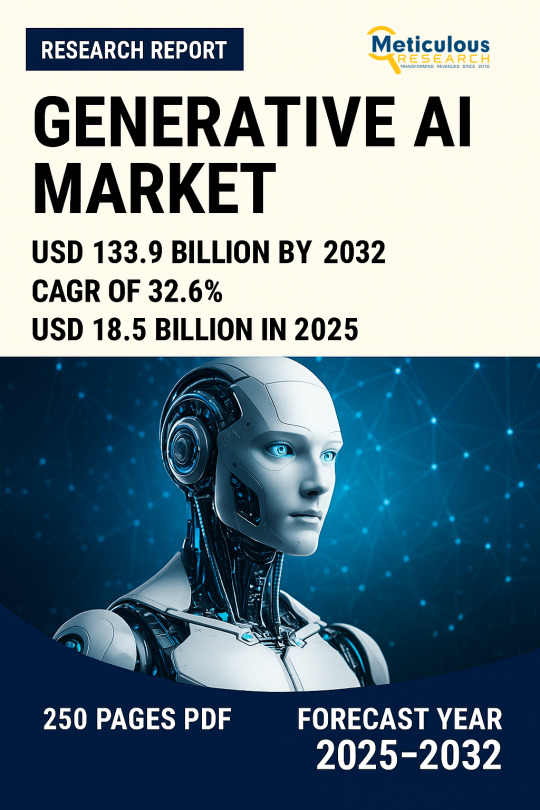
Meticulous Research®—a leading global market research company, published a research report titled ‘Generative AI Market—Global Opportunity Analysis and Industry Forecast (2025-2032)’. According to this latest publication from Meticulous Research®, the generative AI market is expected to reach $133.9 billion by 2032, at a CAGR of 32.6% from 2025 to 2032.
The generative AI market is primarily driven by the rising demand for content creation and creative applications, advancements in AI and deep learning technologies, increasing adoption in the IT and telecom sectors, and a growing emphasis on customer satisfaction. However, concerns related to data privacy and security may restrain market growth.
Furthermore, the rising adoption of generative AI to enhance productivity, the increasing utilization of large language models, the growing demand for automated business processes, and the expanding use of generative AI in the media and entertainment sector are anticipated to create significant growth opportunities for market players. On the other hand, the misconception and limited understanding of generative AI solutions present a challenge that affects the growth of the generative AI market.
A New Era for Industry:
With a market size expected to reach nearly a trillion dollars, generative AI is poised to fundamentally reshape how industries operate. In healthcare, for example, AI-generated insights are making diagnostics faster and more accurate, while in finance, automated content creation and risk assessment are streamlining compliance and boosting efficiency. Manufacturing is seeing smarter supply chains and predictive maintenance, and in retail, personalized recommendations are transforming the customer experience.
But the impact goes beyond automation. Generative AI is enabling companies to innovate at a pace never seen before. Product development cycles are shrinking as AI helps simulate and test new ideas virtually. Media and entertainment companies are using AI to create content tailored to individual tastes, while entirely new business models—like AI-driven design services and content generation platforms—are emerging. The ripple effects will be felt across the global economy, with businesses that adapt quickly reaping the greatest rewards.
What’s Fuelling the Boom?
Several factors are behind the rapid rise of generative AI. First, there’s an ever-increasing demand for innovation and efficiency. Companies are under pressure to do more with less, and AI tools are helping them automate repetitive tasks, generate content, and make smarter decisions. The technology itself has also become more accessible, thanks to advances in large language models and user-friendly platforms.
Another major driver is the clear competitive advantage that early adopters are gaining. Businesses that harness AI for personalized marketing, predictive analytics, or smarter automation are pulling ahead of their peers. The versatility of generative AI means it can be applied to everything from HR and R&D to customer service and product design, making it a valuable asset in almost any sector.
The Role of Market Leaders:
The future of generative AI is being shaped by a handful of major players. Companies like NVIDIA, IBM, OpenAI, Microsoft, Google, and AWS are setting the pace, not just by developing advanced models and infrastructure, but by making these tools available to a wide audience. NVIDIA’s powerful GPUs have become the backbone of AI computing, while OpenAI and Google are constantly pushing the boundaries with new models and APIs.
These leaders are also making it easier for businesses of all sizes to adopt AI, offering flexible pricing, cloud-based solutions, and partnerships that lower the barriers to entry. By democratizing access to advanced AI technology, they’re fostering a vibrant ecosystem of innovation and ensuring that the benefits of generative AI reach far beyond the tech sector.
How Businesses Can Get Ahead:
For companies looking to capitalize on the explosive growth of generative AI, now is the time to act. The first step is to identify areas where AI can have the biggest impact—whether it’s automating customer support, accelerating product development, or delivering personalized experiences. Encouraging a culture of experimentation is also key; teams that are empowered to test new tools and workflows often uncover valuable insights and efficiencies.
Collaboration is another smart move. By partnering with established AI vendors, businesses can tap into world-class expertise and technology, accelerating their own adoption and reducing risk. It’s also important to stay informed about evolving regulations and ethical standards, ensuring that AI is deployed responsibly and builds trust with customers and stakeholders.
Key Players
The key players operating in the generative AI market are NVIDIA Corporation (U.S.), IBM Corporation (U.S.), Amazon Web Services, Inc. (U.S.), Capgemini SE (France), Google LLC. (U.S), Kyndryl Holdings, Inc. (U.S.), Intel Corporation (U.S.), Synthesia (U.K.), Writesonic (U.S.), Salesforce, Inc. (U.S.), D-ID (Israel), and Adobe Inc. (U.S.).
Download Sample Report Here @ https://www.meticulousresearch.com/download-sample-report/cp_id=6008
Contact Us: Meticulous Research® Email- [email protected] Contact Sales- +1-646-781-8004 Connect with us on LinkedIn- https://www.linkedin.com/company/meticulous-research
#Generative Adversarial Networks#Generative AI#Image Synthesis#Text Generation#Deep Learning#Generative AI Market
0 notes